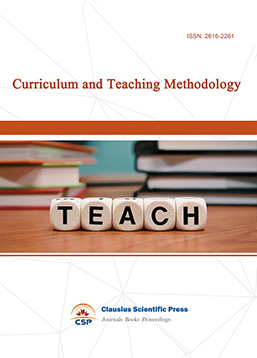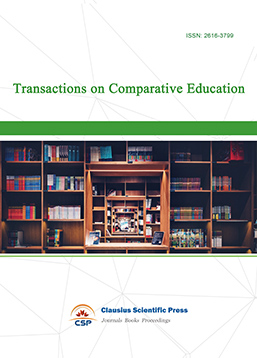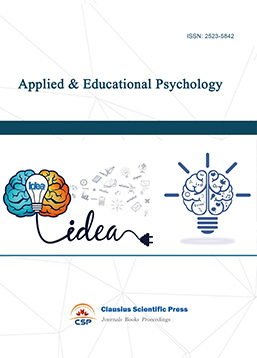Research Scale of College Students' Attitude towards Learning under the Influence of Artificial Intelligence
DOI: 10.23977/aetp.2023.070401 | Downloads: 202 | Views: 3868
Author(s)
Jiabei Tang 1
Affiliation(s)
1 Suryadhep Teachers College, Rangsit University, Pathum Thani, Bangkok, Thailand
Corresponding Author
Jiabei TangABSTRACT
Intelligence and information are important elements in the current development of education, where research on the application of artificial intelligence has been a hot topic in recent years. The assessment using a scale is an important method to explore the learning situation of learners. The article combines three dimensions of artificial intelligence, college students' learning status, and ability development to design the scale, and obtains samples through actual surveys to test the scale. The results show that the scale has good reliability and validity, good internal consistency among the items, a good fit to the scale structure, and meets the index requirements of the scale design. The scale is suitable for investigating the influence of artificial intelligence on college students through information-based university teaching, can provide a basis for the application and development of artificial intelligence in colleges and universities, and can provide scientific help for college students to better use artificial intelligence.
KEYWORDS
Artificial Intelligence; High Education; ScaleCITE THIS PAPER
Jiabei Tang, Research Scale of College Students' Attitude towards Learning under the Influence of Artificial Intelligence. Advances in Educational Technology and Psychology (2023) Vol. 7: 1-6. DOI: http://dx.doi.org/10.23977/aetp.2023.070401.
REFERENCES
[1] Magomadov V. S. (2020, November). The application of artificial intelligence and Big Data analytics in personalized learning. In Journal of Physics: Conference Series. IOP Publishing. 1691(1), 012169.
[2] Jeffrey, T. (2020). Understanding College Student Perceptions of Artificial Intelligence. Journal of Systemics, Cybernetics and Informatics, 18(2), 8.
[3] Mentsiev A U 2020 The Role of Information and Communication Technologies in Modern Education (CITISE) 71-78.
[4] KeDong Li. 2003.Research Methods in Educational Technology. Beijing Normal University Publishing Group
[5] Cotner, S., Loper, J., Walker, J. D., & Brooks, D. C. (2013). "It's not you, it's the room"—Are the high-tech, active learning classrooms worth it? Journal of College Science Teaching, 42(6), 82-88.
[6] Mishra, P., & Kereluik, K. (2011, March). What 21st century learning? A review and a synthesis. In Society for Information Technology & Teacher Education International Conference. Association for the Advancement of Computing in Education (AACE), 3301-3312.
[7] Yang, C., Huan, S., & Yang, Y. (2020). A practical teaching mode for colleges supported by artificial intelligence. International Journal of Emerging Technologies in Learning (IJET), 15(17), 195-206.
[8] Brame, C. (2016). Active learning. Vanderbilt University Center for Teaching.
[9] Chassignol, M., Khoroshavin, A., Klimova, A., & Bilyatdinova, A. (2018). Artificial Intelligence trends in education: a narrative overview. Procedia Computer Science, 136, 16-24.
[10] Wogu, I. A. P., Misra, S., Assibong, P. A., Apeh, H. A., Olu-Owolabi, F. E., & Awogu-Maduagwu, E. A. (2018). Artificial Intelligence, Smart Class Rooms and Online Education in the 21st Century: Implications for Human Development.
[11] Boudourides, M. (2003). Constructivism, education, science, and technology. Canadian Journal of Learning and Technology/La revue canadienne de l’apprentissage et de la technologie, 29(3).
[12] Hinkin, T. R. (2005). Scale development principles and practices. Research in organizations: Foundations and methods of inquiry, 1, 161-179.
[13] Worthington, R. L., & Whittaker, T. A. (2006). Scale development research: A content analysis and recommendations for best practices. The counseling psychologist, 34(6), 806-838.
[14] Browne, M. W., & Cudeck, R. (1993). Alternative ways of assessing model fit. In K. A. Bollen & J. S. Long (Eds.), Testing structural equation models. Newbury Park, CA: Sage, 136-162.
[15] Kenny, D. A., Kaniskan, B., & McCoach, D. B. (2015). The performance of RMSEA in models with small degrees of freedom. Sociological methods & research, 44(3), 486–507.
| Downloads: | 47892 |
|---|---|
| Visits: | 2055268 |

 Download as PDF
Download as PDF



